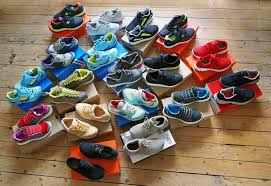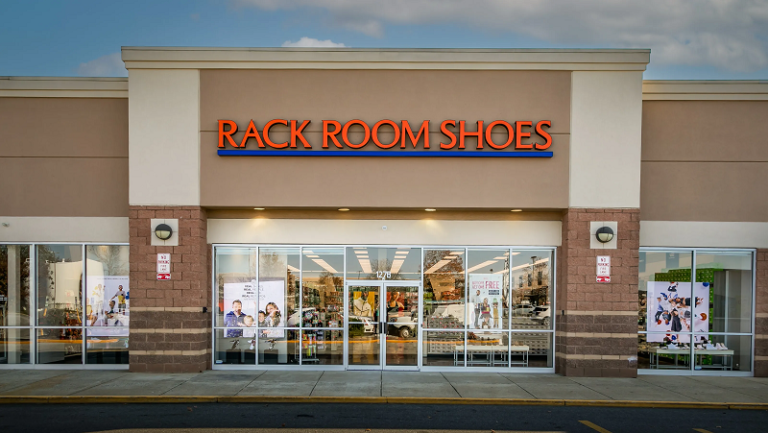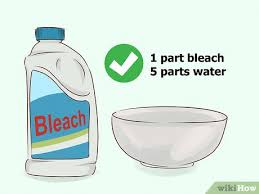Shoe care tips Pakistan
Shoe Care Tips for Pakistan: How to Keep Your Footwear Looking Great & Lasting Long
Whether you’re in Karachi’s humid air, Lahore’s dust-filled lanes or Islamabad’s changing seasons, taking care of your shoes properly is key. In Pakistan’s climate and lifestyle, a little effort goes a long way in ensuring your favourite shoes remain in top condition. This comprehensive guide on shoe care tips Pakistan will walk you through cleaning, storage, repair, maintenance and more—covering leather shoes, suede, sneakers, canvas, and traditional footwear.
Why Proper Shoe Care Matters in Pakistan
Your footwear is more than just a style statement. Well-cared shoes reflect your personality, boost your confidence, protect your feet and save you money in the long run. Especially in Pakistan, where dust, humidity, monsoon rains, heat and frequent wear all impact footwear, maintaining your shoes makes sense.
For example, many local brands highlight that good care can significantly extend the life of leather shoes. Without it, you risk the soles wearing out, leather cracking, colour fading or the shape getting ruined.
Overview of Shoe Materials & What Makes Them Unique
Before diving into how to care for shoes, it helps to understand the material types you commonly find in Pakistan:
- Full-grain / smooth leather – Often used in premium formal shoes, dress shoes and some casuals.
- Suede/nubuck leather – The “fuzzy” side of leather; used in casual shoes, boots, khussas and fashion sneakers.
- Canvas/fabric – Used in casual footwear, esp. in summer or by younger wearers.
- Synthetic/vegan leather or PU – Often in budget footwear or fashion shoes; less durable than real leather but still needs care.
- Sneakers / sporty sole-shoes – Combining varied materials (mesh, rubber, leather) and subject to heavy usage.
Each material has its own care requirements. A one-size-fits-all approach will not work. For example, suede cannot be treated like smooth leather.
Daily & Weekly Basic Maintenance
Adopting some simple habits can greatly increase the lifespan of your shoes. These are universal and apply no matter the material.
1. Rotate Your Shoes
Wearing the same pair every day causes faster wear, prevents full drying and recovery, and increases moisture build‐up. Many local Pakistani advice outlets recommend rotation. Try to have at least two pairs in active use, and let one rest between wears.
2. Wipe/Sweep After Use
After a day’s wear, especially if you’ve walked through dust, mud or rain: use a soft dry cloth or brush to remove surface debris. This keeps dirt from working into the material.
3. Drying & airing out
If shoes get damp—whether from sweat or rain—allow them to air dry naturally in a shaded area. Avoid direct heat (radiators, hair dryers), which can warp the material or make leather brittle.
4. Use Shoe Trees / Supports
After taking off shoes, insert a shoe tree or stuff them with plain paper to help maintain shape, absorb moisture and minimise creasing. Some Pakistani shoe brands recommend cedar wooden shoe trees.
5. Store Properly
Store shoes in a cool, dry place, not under direct sunlight, and ideally in dust bags or boxes. Avoid plastic bags, which trap moisture. Many local blog posts emphasise storage in breathable packaging.
Material-Specific Care Tips in the Pakistani Context
Now let’s get into how to care for each material type, with additional tips specific to conditions found in Pakistan (dusty streets, monsoon humidity, heat, etc.).
Leather Shoes (Smooth / Full-grain)
Leather shoes are durable and stylish—but only if looked after. Whether you’re using formal leather oxfords, business loafers or casual leather shoes, here are the steps:
Cleaning
Remove surface dust/debris with a soft brush or dry cloth. For deeper cleaning, use a damp cloth with mild soap (not soaking water). Avoid using harsh chemicals. After cleaning, allow to air dry naturally.
Conditioning & Polishing
Leather needs nourishment to stay flexible and prevent cracking. Use a good leather conditioner (especially after heavy wear or rainy days). Then apply a colour-matched or neutral shoe polish/wax. Use circular motions, allow drying, then buff lightly.
Protection from Moisture & Weather
In rainy or humid regions of Pakistan (Karachi, Lahore, etc.), avoid wearing smooth leather shoes in heavy rain unless they are waterproofed. Leather soles especially suffer in wet weather. Some advice: if they get wet, stuff them with newspaper and let them dry naturally.
Soles & Repairs
Over time, the sole wears out faster than the upper. A good local shoemaker can resole your shoes for much less than buying a new pair. One Pakistani store states that the sole may last about 300 days, but the upper leather can last for years with care.
Shape & Storage
Always insert a shoe tree after each wear to keep the upper from collapsing. Store in a dust-free area out of direct sunlight. Avoid stacking heavy items on top of your shoes in storage.
Extra Tip: Use Moisture-Absorbing Inserts
In humid cities, consider desiccant packets or moisture-absorbing inserts to place in shoes when stored to protect leather from mould or odour.
Suede & Nubuck Shoes
Suede is fashionable and comfortable, but more delicate. In Pakistan’s environment (dust + occasional rain), suede demands special attention.
Dry Brushing
Use a suede brush (or soft brass-bristle brush) to remove surface dust and restore the nap. Do **not** use water directly. In one Pakistani online forum: > “Never use water on suede or nubuck shoes.”
Stain Removal
For smudges, use a suede eraser or gently rub with a clean rubber eraser. You can also use suede cleaner foam, but remain gentle and allow to dry naturally.
Protection from Moisture
Avoid wearing suede shoes in heavy rain or through puddles. If they get damp, stuff with paper, air dry, and brush once dry. Do NOT apply wax or polish designed for smooth leather.
Storage
Store suede shoes in breathable bags. In dusty regions, use a dust cover and allow them to flop a bit to preserve the nap rather than being squeezed in a tight box.
Canvas, Fabric & Casual Footwear
Often used for casual wear, light everyday shoes or summer-friendly footwear. The care here is simpler but still important in Pakistan’s conditions.
Spot Cleaning
Use a mild soap or detergent diluted in water, apply with a soft cloth or brush, scrub gently, rinse lightly (avoid soaking) and air dry. One global guide emphasises gentle treatment for fabrics.
Avoid Machine Washing (Unless Specified)
Machine washing can damage adhesives and shape. Unless the manufacturer says it is machine washable, wash by hand.
Drying & Storage
After cleaning, air dry away from direct sunlight to avoid textile fading. Store in a dry environment—dust and humidity both can cause odour or degradation.
Sneakers & Multi-Material Shoes
Sneakers may have leather, mesh, rubber and fabric all in one. In Pakistan’s urban settings, these get heavy wear: commuting, walking, quick errands, etc. Care requires a multi-angle approach.
Remove Laces & Insoles First
Take out the laces and insoles (if removable). Wash the laces separately by hand. This allows a deeper clean of the shoe upper.
Clean the Upper & Soles
Brush off the loose dirt. For the upper, depending on material: leather portions treated as leather; fabric portions treated like fabric. The soles often get muddy or oily—use an appropriate brush and mild soap.
Drying
Air-dry naturally. Remove excess moisture, and avoid wearing them again until fully dry. Direct heat and sunlight can warp soles or damage adhesives.
Deodorise & Maintain Freshness
In Pakistan’s warm/humid climate, feet sweat more, and shoes can develop odours. Use moisture-absorbing inserts, baking soda overnight, or specialised sneaker deodorisers.
Rotate & Rest
Don’t wear your sneakers every day. Let them rest, air out and recover shape. This improves life span and performance.
Additional Tips for Pakistan Conditions
Given the local climate, lifestyle and environment in Pakistan, there are a few extra-special considerations:
Dust & Pollution
Cities like Karachi, Lahore, and Islamabad have dust, fine particles and air pollution. These settle into the shoe material and accelerate wear. Wipe shoes after outdoor use, especially leather and suede, to prevent particles from working into pores.
Monsoon & Rainy Season
In monsoon months, you might get sudden rain or damp sidewalks. Leather and suede suffer especially. For leather, apply a water-repellent spray or wax before the season begins. For suede, avoid puddles and store shoes away from dampness. Use paper stuffing if shoes get soaked, and let them dry slowly.
Heat & Sunlight
Strong sunlight can fade colours, dry leather too fast (leading to cracking), and warp shoes stored near windows. Avoid storing shoes on hot balcony floors or near heaters. Opt for shaded, ventilated storage.
Humidity & Moisture
High humidity (coastal Karachi, for example) means shoes don’t dry fully and are prone to mould or odour. Use silica gel packs or moisture absorbers in shoe boxes. Let shoes air out for a day before storage.
Budget & Local Brands Consideration
If you’ve invested in mid-range local Pakistani shoes (or imported ones), the same rules apply. Some local brands in Pakistan already provide care instructions tailored to local conditions. For example, one Pakistani brand says: “Keep your shoes away from water… after use, keep shoes in the shoebox.”
Repair & Maintenance Checklist
Even with the best care, shoes will eventually need repair. Here’s a checklist of what to watch out for and when to head to a shoemaker in Pakistan.
- Worn-out soles: If you feel stones or uneven wear when walking, consider resoling instead of replacing the shoe entirely.
- Loose stitching or eyelets: Get them repaired early before bigger damage.
- Cracked or dried leather: Often due to neglect or too much heat—condition more often.
- Suede nap flattened: Brush and restore; if colour faded, a suede-safe dye may help.
- Odour problems: Clean insoles, allow shoes to air out, use deodoriser sheets. In Pakistan, sweat + heat = strong odours.
- Glue separation: If the sole or upper starts peeling, get it repaired promptly.
Common Mistakes to Avoid
When caring for shoes in Pakistan, many people make avoidable mistakes:
- Using a wet machine-wash for all shoes → bad for glued soles and leather.
- Drying shoes near a heater or in direct sun → leather dries too fast, cracks or warps.
- Not rotating pairs → every day use causes faster breakdown.
- Storing shoes while still damp → leads to mould, bad odour or material breakdown.
- Applying wrong products (e.g., using wax on suede) → can damage the material.
Frequently Asked Questions (FAQ)
Q: How often should I polish my leather shoes in Pakistan?
A: If you wear them regularly (2-3 times a week) in city conditions, aim for polishing every 2-4 weeks. More often, if exposed to rain or heavy use.
Q: Can I use the same care products for imported shoes and Pakistani shoes?
A: Yes, generally—but check the material description. Imported shoes may have different finishes or adhesives. For Pakistani shoes, brands already account for the local climate but still follow the same material-based rules.
Q: What should I do if my suede shoes get wet in the Lahore or Karachi monsoon?
A: Remove as much moisture as possible by blotting, stuff with paper, let them dry naturally away from heat, then brush the nap once dry. Avoid wearing until fully restored.
Q: Does cleaning sneakers really matter?
A: Absolutely. Urban usage, dust, sweat and repeated wear all degrade materials and adhesives. A quick clean every few weeks, plus occasional deep cleaning, can prolong life significantly.
Q: Is it worth resoling expensive shoes in Pakistan?
A: Yes. If the upper is still strong, resoling is often much cheaper than replacing the whole shoe—and is environmentally friendly too.
Best Products & Tools to Keep Handy (in Pakistan)
Here are some recommended items you should consider keeping for regular shoe care in the Pakistani context:
- Soft horsehair brush and a small stiff brush for suede.
- Leather cleaner & conditioner (neutral or matching colour).
- Shoe polish/wax (cream or neutral) for leather.
- Suede brush + eraser and suede‐safe spray protector.
- Mild soap or fabric cleaner for canvas/fabric shoes.
- Shoe trees (cedar wood or quality wood) for storing shape.
- Moisture-absorbing sachets or silica gel for humid months.
- Shoe bags or breathable storage boxes; avoid plastic bags.
- Small kit for emergency: cloth, mild soap, brush—useful to keep in car or travel bag.
How to Build a Shoe Care Routine That Works for You
You don’t need to spend hours or buy expensive products every week. Here’s a practical routine you can follow in Pakistan:
- After each wear, wipe off visible dust/debris; insert the shoe tree; and air the shoes overnight.
- Weekly: Give a quick clean: brush, spot-clean, check for stains or damages.
- Monthly: For leather: condition and polish. For suede: brush nap and inspect. For canvas/sneakers: deeper clean. Check soles and seams.
- Seasonally (every 3-6 months): Check storage, make sure shoes are fully dry, reseal if necessary (especially before monsoon or after a wet season). Get resolving or repairing if needed.
- Storage break: For pairs you wear less frequently, keep them in dust bags, rotate usage so each pair rests and recovers.
Special Notes for Pakistani Footwear Types
In Pakistan, you may also wear traditional or local footwear types like khussas, juttis, Peshawari chappals, etc. Here are some pointers:
- Khussas, Juttis: Often embroidered, delicate fabrics/leather. Clean with a soft cloth or an old toothbrush around embroideries. Avoid water if possible. Use dust bags/storage boxes.
- Peshawari Chappals / Leather sandals: Clean after dusty roads; condition leather straps; avoid leaving in damp places.
- Budget synthetic shoes: While less expensive, they also suffer if neglected. Clean fabric parts, remove moisture, and avoid harsh cleaning methods that may damage glue or synthetic finish.
Why Investing in Shoe Care is Actually Saving Money
Many people think “just buy new shoes” when theirs start looking worn. But consider this:
- A pair of good leather shoes can last 5-10 years or more with care.
- Repairing or resoling is cheaper than replacing, and local Pakistani cobblers are skilled and available.
- Well-maintained shoes keep their comfort, shape and support—saving your feet from strain or injury.
- In professional settings (business meetings, weddings), well-kept shoes reflect positively on you.
Conclusion: Start Caring Smarter, Not Harder
In the fast-paced life in Pakistan’s cities, it’s easy to overlook your shoes until one day they look ruined. But with just a bit of effort and attention, your footwear can stay sharp, comfortable and long-lasting. Follow the material-specific tips, adapt your routine to local climate (dust, heat, rain), and you’ll maximise the lifespan of every pair.
Remember: clean them, store them, let them rest, repair them when needed. Your shoes are an investment—and they deserve to be treated accordingly.
So the next time you slip into your shoes, take a moment to care a little. Your shoes will thank you—and so will your feet and your wallet.






